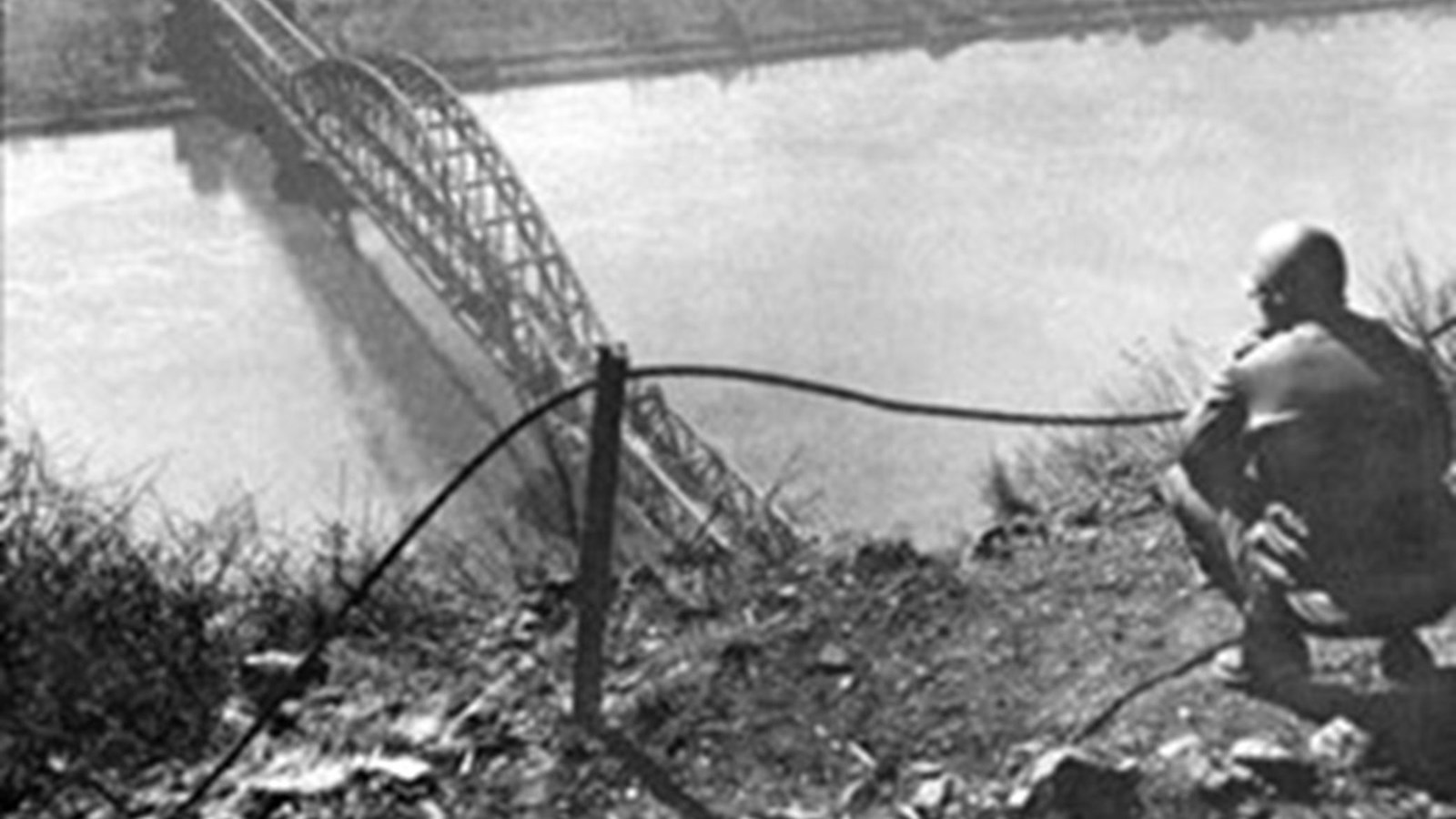Last updated: June 8, 2025
Place
Remagen Bridge

U.S. Army Signal Corps, National Archives
Following the Battle of the Bulge, the Allies pushed toward Germany and the Rhine River. The retreating Germans had destroyed all bridges across the Rhine, except one: the Ludendorff Bridge near Remagen.
Seizing this unexpected opportunity, the Americans rushed to secure the bridge before the Germans could demolish it. On March 7, 1945, they successfully captured it, allowing five divisions to cross before its eventual collapse on March 17. Anticipating its destruction, U.S. forces had already constructed pontoon bridges as a backup.
Between March 7 and 17, the Germans relentlessly attacked the Ludendorff Bridge using aerial bombardments, field artillery, and floating mines. Historians believe that cumulative damage from these assaults, particularly from bombs and artillery, weakened the structure, leading to its collapse.
The capture of the bridge proved pivotal, granting the Allies a crucial foothold east of the Rhine and accelerating their advance deeper into Germany.
